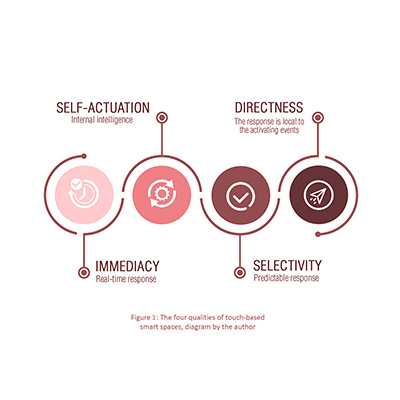TIS Topics / Abstracts - a.y. 2019/20
Towards smart sensory spaces using touch-based computational methodologies

When touching an interior skin, the user feels and perceives the meaning of the interior space, but how about the skin reaction in response to this touch? The paper is a new approach for commuting the touch sensing, creating an adaptive smart space. The responsive skin has the capability to sense hand touching and respond to it by changing its properties according to the user’s needs, in which sense of touch is the shaper of the space that converts static skin into breathing livable surface. It is an attempt to change the way people interact with interior skins through embodied computation.